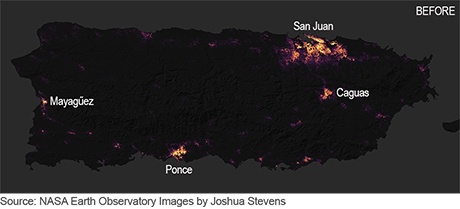Where Are Manufacturing Jobs Coming Back?

As we outlined in our previous post, the United States lost close to six million manufacturing jobs between 2000 and 2010 but since then has gained back almost one million. In this post, we take a closer look at the geographic dimension of this modest rebound in manufacturing jobs. While job losses during the 2000s were fairly widespread across the country, manufacturing employment gains since then have been concentrated in particular parts of the country. Indeed, these gains were especially large in “auto alley”—a narrow motor vehicle production corridor stretching from Michigan south to Alabama—while much of the Northeast continued to shed manufacturing jobs. Closer to home, many of the metropolitan areas in the New York-Northern New Jersey region have been left out of this rebound and are continuing to shed manufacturing jobs, though Albany has bucked this trend with one of the strongest performances in the country.
The (Modest) Rebound in Manufacturing Jobs

The United States lost 5.7 million manufacturing jobs between 2000 and 2010, reducing the nation’s manufacturing employment base by nearly a third. These job losses and their causes have been well documented in the popular press and in academic circles. Less well recognized is the modest yet significant rebound in manufacturing jobs that has been underway for several years. Indeed, employment in the manufacturing industry began to stabilize in 2010, and the nation has added nearly 1 million jobs since then. Although modest in magnitude, this uptick in manufacturing jobs represents the longest sustained increase since the 1960s and bucks a decades-long trend of secular decline in employment in the goods producing sector of the economy. This is the first of two posts on the rebound in manufacturing jobs. In this post, we outline the manufacturing jobs recovery and assess which sectors within the manufacturing industry are driving this increase. The second post will focus on the geography of the manufacturing employment rebound. It will examine where manufacturing jobs are growing and where they are continuing to decline, with a focus on how areas in the New York-Northern New Jersey region have fared.
Just Released: Are Employer‑to‑Employer Transitions Yielding Wage Growth? It Depends on the Worker’s Level of Education

The rate of employer-to-employer transitions and the average wage of full-time offers rose compared with a year ago, according to the Federal Reserve Bank of New York’s July 2018 SCE Labor Market Survey. Workers’ satisfaction with their promotion opportunities improved since July 2017, while their satisfaction with wage compensation retreated slightly. Regarding expectations, the average expected wage offer (conditional on receiving one) and the reservation wage—the lowest wage at which respondents would be willing to accept a new job—both increased. The expected likelihood of moving into unemployment over the next four months showed a small uptick, which was most pronounced for female respondents.
Do Expansions in Health Insurance Affect Student Loan Outcomes?

The Patient Protection and Affordable Care Act (ACA) is arguably the biggest policy intervention in health insurance in the United States since the passage of Medicaid and Medicare in 1965. The Act was signed into law in March 2010, and by 2016 approximately 20 to 24 million additional Americans were covered with health insurance. Such an extension of insurance coverage could affect not only medical bills, but also educational, employment, and broader financial outcomes. In this post, we take an initial look at the relationship between the ACA and higher education financing choices and outcomes. We find evidence that expansions in healthcare coverage may influence both the prevalence of student loans and loan repayment behavior. The evidence suggests that individuals covered by ACA-related expansions are taking out slightly more loans and taking a longer time to start repayment.
Beginning to Gauge Maria’s Effect on Puerto Rico’s Economy

Just two weeks after most of Puerto Rico dodged the proverbial bullet, missing the brunt of Hurricane Irma, the island was devastated by Maria—one of the ten strongest Atlantic hurricanes on record. Making landfall on September 20, 2017, the storm caused not only massive physical destruction and tragic loss of life but also widespread and persistent power outages, shortages of potable (and even nonpotable) running water, and disruptions to telecommunications and travel, among other issues. With the storm boosting costs and disrupting activity, the short-term economic impact is clearly significant. But an even greater concern is that the adverse short-term effects of the storm, overlaid on an already shrinking economy, may evolve into long-term adverse effects. In this post, we focus on the magnitude, duration, breadth and nature of the economic disruptions, as measured mostly by employment.
Upstate New York Job Growth: The Bad News Is that the Good News Was Wrong
A Mis‑Leading Labor Market Indicator
The unemployment rate is a popular measure of the condition of the labor market.
Just Released: Are Recent College Graduates Finding Good Jobs?
Stories abound about recent college graduates who are struggling to find good jobs in today’s economy, especially with student debt levels rising so quickly.
States Are Recovering Lost Jobs at Surprisingly Similar Rates
The U.S. economy lost more than 8 million jobs between January 2008 and February 2010.
















 RSS Feed
RSS Feed Follow Liberty Street Economics
Follow Liberty Street Economics